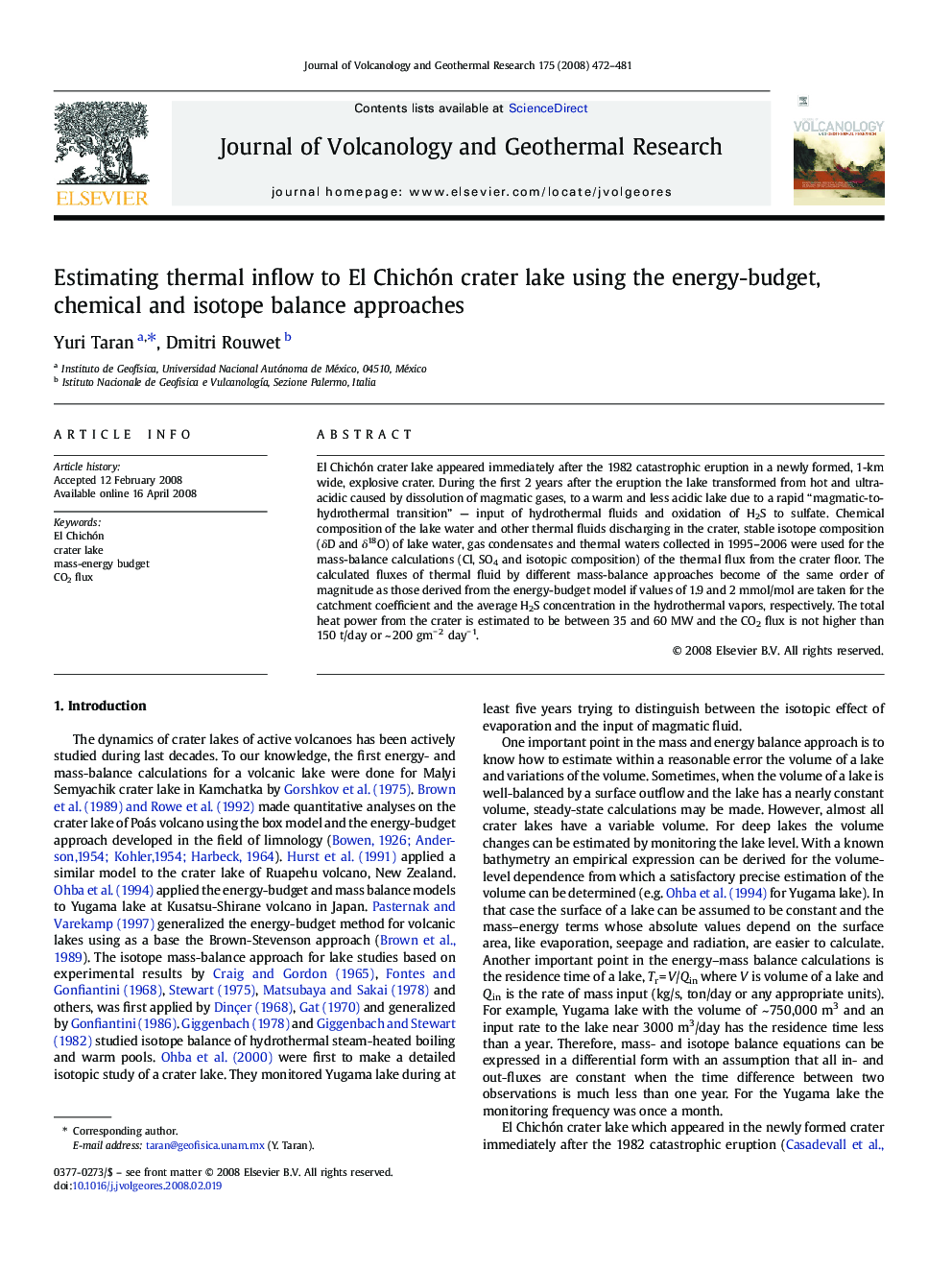| Article ID | Journal | Published Year | Pages | File Type |
|---|---|---|---|---|
| 4715284 | Journal of Volcanology and Geothermal Research | 2008 | 10 Pages |
El Chichón crater lake appeared immediately after the 1982 catastrophic eruption in a newly formed, 1-km wide, explosive crater. During the first 2 years after the eruption the lake transformed from hot and ultra-acidic caused by dissolution of magmatic gases, to a warm and less acidic lake due to a rapid “magmatic-to-hydrothermal transition” — input of hydrothermal fluids and oxidation of H2S to sulfate. Chemical composition of the lake water and other thermal fluids discharging in the crater, stable isotope composition (δD and δ18O) of lake water, gas condensates and thermal waters collected in 1995–2006 were used for the mass-balance calculations (Cl, SO4 and isotopic composition) of the thermal flux from the crater floor. The calculated fluxes of thermal fluid by different mass-balance approaches become of the same order of magnitude as those derived from the energy-budget model if values of 1.9 and 2 mmol/mol are taken for the catchment coefficient and the average H2S concentration in the hydrothermal vapors, respectively. The total heat power from the crater is estimated to be between 35 and 60 MW and the CO2 flux is not higher than 150 t/day or ~ 200 gm− 2 day− 1.
